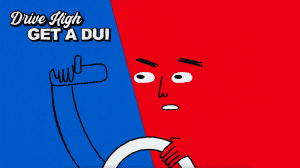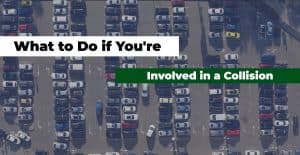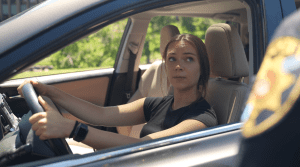As the chilly weather fades away and springtime’s colorful hues begin to bloom, Colorado evenings will begin to liven up. The cold will no longer keep everyone inside at night, and as outdoor events start popping up and clear roads allow more opportunities for relaxing nighttime drives and weekend road-trips, there will be an influx of motorists out on the road after the sun goes down.
While nighttime driving is not remarkably more difficult than its daytime counterpart, there are a few reasons why it can be a bit challenging for those who are new to it. For one, there is less visibility, making it harder to see other cars, pedestrians and obstacles, and it is also more likely to come across drivers who are drowsy or impaired.
Whether you’re a motorist who has limited experience operating a vehicle when it’s dark outside, or you’re simply due for a refresher of safety tips, here are a few things to keep in mind when driving at night:
Abide By Teen Driving Laws
If you are (or have) a teenager who is under the age of 18, Colorado’s graduated licensing laws state that minors cannot drive between midnight and 5 am until they’ve held a license for one year.
It’s important to abide by these rules so that you can gradually build your skills as an independent driver without diving right into the demands of nighttime driving. Additionally, violations of these laws can result in community service, fines, and points towards a drivers license suspension.
Use Your Headlights Appropriately
Using your headlights correctly ensures that other parties on the road can see your vehicle after sundown. While using your headlights probably seems intuitive enough, there are a few specific Colorado laws and guidelines designed to keep all motorists safe, including:
- Your headlights should be in use between sunset to sunrise (most people turn theirs on about an hour before sundown and leave them on an hour after sunrise).
- Use your high beams in rural or dimly lit/unlit areas. That being said, high beams can blind approaching drivers, so switch to your low beam setting within 500 feet of oncoming vehicles.
- Never use your high beam lights when you are behind a vehicle unless there is more than 200 feet between your car and the one in front of you.
- To avoid the glare of other oncoming headlights, shift your focus slightly down and to the right of the lane until the vehicle passes. You can use the road lines to help guide you.
Keep Your Windshield, Windows, and Mirrors Clean
From condensation streaks, bug stains, and dirt and debris build-up, windshields don’t stay crystal clean for long. While normal grime is not overtly noticeable during the day, it can cause distracting glares at night, resulting in clouded vision. The same sentiment applies to your mirrors and windows.
Maintaining a clear field of vision is a fundamental aspect of safe driving, so take time to clean these surfaces, including the exterior and the interior, with glass cleaner and a clean microfiber cloth before you hit the road. It only takes a few minutes to do this, and you’ll be able to see much more clearly.
Watch Closely for Pedestrians
While it would be ideal for pedestrians to wear brightly colored clothing when they walk at night, it’s not always how it goes. It can be difficult to see pedestrians even in the daytime, but when you factor in the possibility of dark clothing, dimly lit areas, and glare from other vehicles, it’s best to be even more vigilant about staying alert for those on foot at night.
To help you do this, here are a few safety tips to keep in mind:
- Approach cross-walks carefully, and avoid going over the white line until you know for certain that the coast is clear.
- If you see a pedestrian at an intersection and are not sure which direction they are going, wait a few moments until you are confident that you can move ahead safely.
- Avoid stopping in the middle of the road to let a pedestrian cross. It is a nice gesture, but doing so could pose a risk for a collision if an approaching vehicle doesn’t have time to safely react to you being unexpectedly stopped.
- Look both ways before making turns.
Keep an Eye Out for Wildlife
In Colorado, nighttime driving means you’re more likely to run into some of the state’s diverse wildlife. High beams can help you see farther ahead, so be sure to use those when appropriate to help scout for any animals wandering into the road.
While there are products designed to lower your chances of encountering animals while driving, such as deer whistles (small attachments for your car that emit a high-pitched frequency to scare deer away), the effectiveness of these items is debated. By paying attention to animal crossing signs, slowing down and staying alert, you’ll improve your chances of keeping you and any animals out of harm’s way.
Avoid Drowsy Driving
Driving at night after a long day can lead to feelings of heavy fatigue, which often result in diminished alertness and the possibility of drifting into other lanes. Symptoms like heavy eyelids, frequent yawning, and mentally spacing out are all indicators that you may not be in the best shape to operate a vehicle.
Try to get a good night’s sleep every night, and if you find yourself having trouble keeping your eyes open, try to avoid driving altogether until you can catch up on some much-needed rest. If you experience this while you’re already operating a car, ask a passenger to drive if possible, or pull over to a rest stop to get a quick nap in or call for a ride.
Drive Defensively
Defensive driving skills help you navigate the roads safely by allowing you to better assess and react to hazards, including those posed by other drivers as well as particular driving conditions. When it comes to driving after dark, here are a few defensive strategies to help mitigate the challenges that nights on the road present:
- Increase your following distance, and slow down. Because visibility is less clear after the sun goes down, creating a larger distance between you and the vehicle in front of you, along with driving at a slower speed, gives you more time and room to notice and react to any unexpected situations.
- Stay focused, and remove distractions. While alertness is necessary at all times when driving, it’s especially vital when hard-to-see hazards, such as a deer in the road, are more prevalent.
- Assess for possible risks, and plan a course of action. For example, if you notice a driver swerving next to you, carefully move to another lane.
- Take a defensive driving skills course. While some defensive skills are easy enough to grasp right away, a certified instructor can teach you in-depth tactics to help you avoid hazards, react safely to unexpected scenarios, and handle stressful road conditions, whether they occur day or night.
Closing Up
Hopefully these suggestions give you a strong foundation as to how you can stay safe driving after the sun sets. While nighttime driving presents a few challenges, you should have no issue navigating down the road if you follow basic legal, safety, and preventative measures. If you can manage this, you’ll soon enjoy the tranquility of the twinkling stars and city lights that make driving during the dark hours a serene experience.
Learn to Drive Safe at All Times With DriveSafe Driving Schools
DriveSafe Driving Schools has been proudly serving the drivers ed needs of Colorado for decades, and we’ve helped thousands of students learn what it takes to navigate the roads safely during any time of the day and throughout all times of the year.
Whether you’re looking for a traditional comprehensive driving course, an advanced skills class, private driving lessons, or online drivers ed options we can happily provide exactly the type of drivers education you’re looking for.
To learn more about how we can help you, browse our services or contact us today!













